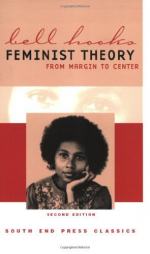
|
| Name: _________________________ | Period: ___________________ |
This test consists of 15 multiple choice questions and 5 short answer questions.
Multiple Choice Questions
1. How did women working for change initially view the exercise of power?
(a) As something negative.
(b) As something to strive for.
(c) As a rejection of femininity.
(d) As a luxury.
2. How did early feminists, and society at the time, view housework?
(a) As relatively easy work.
(b) As something a woman cannot escape.
(c) As an ideal job.
(d) As demeaning.
3. What do early feminist concepts of sexual liberty represent for the author?
(a) She does not say what they represent for her.
(b) A chance to finally be free from male desires.
(c) Another manifestation of women adopting male-defined, heterosexist attitudes.
(d) A more practical approach to sex.
4. How is the long and painstaking process of change experienced by societies like the United States?
(a) As relatively easy.
(b) As boring.
(c) As foreign, unappealing, and frustrating.
(d) As frustrating but entertaining.
5. What was the week point in feminists' initial view of power?
(a) They did not realize that power was not limited to men.
(b) Their opinions were vague and lacked cohesion.
(c) They did not distinguish between power as domination and control over others and power that is creative and life-affirming.
(d) They placed too much value on attaining power and not enough on its effects.
6. What is violence truly a manifestation of for the author?
(a) Hatred of women, especially the mother.
(b) Imperialism, power, and a hierarchy of control.
(c) Insecurity.
(d) Sexual inadequacy.
7. Who is affected by sexist attitudes in the author's view?
(a) Women.
(b) No one.
(c) Both men and women.
(d) Gay men.
8. What will happen if people follow the course of action regarding beliefs about motherhood proposed by the author?
(a) It will help new mothers to carry on traditions.
(b) It will help to eliminate systemic sexism.
(c) It will expose others to non-western cultural perspectives.
(d) It will help children learn about motherhood.
9. What ideas about parenting does the author initially discuss?
(a) European ideas of parenting.
(b) Feminist ideas about parenting.
(c) Parenting in American television sitcoms.
(d) Same sex couples' ideas about parenting.
10. How does consumerism relate to the author's discussion of power?
(a) Feminists should not be distracted from fighting sexism by focusing on resisting consumerism.
(b) It does not come up in her discussion at all.
(c) Combatting consumerism is a positive manifestation of women's power.
(d) Feminists should tap into consumer culture to gain power.
11. What represents true sexual liberty for the author?
(a) Ending sexual oppression and sexism.
(b) Same sex relations.
(c) Unrestricted heterosexual relations.
(d) Abstinence.
12. What is the main topic of discussion in Chapter Eleven, "Ending Female Sexual Oppression."
(a) Sexuality and sexual expression.
(b) Sexual harassment in the work place.
(c) Prostitution.
(d) Pornography.
13. Why does society-the U.S. in particular-have this kind of reaction to the process of change?
(a) Because its citizens are unaccustomed to having to wait for things.
(b) Because people need constant entertainment.
(c) Because change always happens quickly in the U.S.
(d) Because it has nothing to compare this process to.
14. How does the author view the kind of power practiced by women from non-affluent communities?
(a) As an ideal kind of power.
(b) As an imitation of patriarchal models of power
(c) As a disappointment.
(d) As a new form of slavery.
15. In the author's view, how should the beliefs about motherhood that she discusses be dealt with?
(a) They should be taught in schools.
(b) They should be replaced by non-European beliefs.
(c) They should be embraced by new mothers.
(d) They should be broken down and eliminated.
Short Answer Questions
1. What is the author's main contention about work in Chapter Seven?
2. Whose ideas in particular does she address?
3. How does the author present education in the title of Chapter Eight
4. What has been the result of this mode of circulation?
5. How did many lower/middle class and/or non-white women respond to this view of work?
|
This section contains 735 words (approx. 3 pages at 300 words per page) |

|




